
The Doors were an American rock band formed in Los Angeles in 1965, with vocalist Jim Morrison, keyboardist Ray Manzarek, guitarist Robby Krieger, and drummer John Densmore. They were among the most influential and controversial rock acts of the 1960s, partly due to Morrison's lyrics and voice, along with his erratic stage persona. The group is widely regarded as an important figure of the era's counterculture.
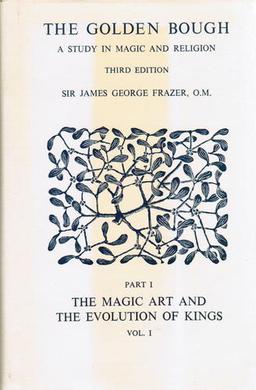
The Golden Bough: A Study in Comparative Religion is a wide-ranging, comparative study of mythology and religion, written by the Scottish anthropologist Sir James George Frazer. The Golden Bough was first published in two volumes in 1890; in three volumes in 1900; and in twelve volumes in the third edition, published 1906–1915. It has also been published in several different one-volume abridgments. The work was for a wide literate audience raised on tales as told in such publications as Thomas Bulfinch's The Age of Fable, or Stories of Gods and Heroes (1855). The influence of The Golden Bough on contemporary European literature and thought was substantial.

Waiting for the Sun is the third studio album by the American rock band the Doors, release by Elektra Records on July 3, 1968. The album's 11 tracks were recorded between January and May 1968 at TTG Studios in Los Angeles. It became the band's only number one album, topping the Billboard 200 for four weeks, while also including their second US number one single, "Hello, I Love You". The first single released off the record was "The Unknown Soldier", which peaked at number 39 on the Billboard Hot 100. It also became the band's first hit album in the UK, where it reached number 16.
In many historical societies, the position of kingship carries a sacral meaning; that is, it is identical with that of a high priest and judge. The concept of theocracy is related, although a sacred king does not need to necessarily rule through his religious authority; rather, the temporal position itself has a religious significance behind it.
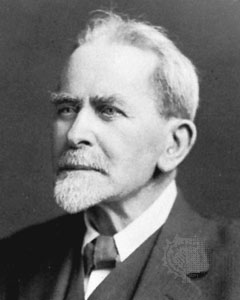
Sir James George Frazer was a Scottish social anthropologist and folklorist influential in the early stages of the modern studies of mythology and comparative religion.

The Soft Parade is the fourth studio album by American rock band the Doors, released on July 18, 1969, by Elektra Records. Most of the album was recorded following a grueling tour during which the band was left with little time to compose new material. Record producer Paul A. Rothchild recommended a total departure from the Doors' first three albums: develop a fuller sound by incorporating brass and string arrangements provided by Paul Harris. Lead singer Jim Morrison, who was dealing with personal issues and focusing more on his poetry, was less involved in the songwriting process, allowing guitarist Robby Krieger to increase his own creative output.

"I'm Only Sleeping" is a song by the English rock band the Beatles from their 1966 studio album Revolver. In the United States and Canada, it was one of the three tracks that Capitol Records cut from the album and instead included on Yesterday and Today, released two months before Revolver. Credited as a Lennon–McCartney song, it was written primarily by John Lennon. The track includes a backwards lead guitar part played by George Harrison, the first time such a technique was used on a pop recording.
"Celebration of the Lizard" is a performance piece by American rock band the Doors, featuring lyrics written by lead singer Jim Morrison and music by the Doors. Composed as a series of poems, the piece includes both spoken verse and sung lyrics, musical sections and passages of allegorical storytelling.

"Touch Me" is a song by the Doors from their 1969 album The Soft Parade. Written by guitarist Robby Krieger in late 1968, it makes extensive use of brass and string instruments, including a solo by featured saxophonist Curtis Amy.

Butterfly is the seventh UK studio album by British band the Hollies, released in November 1967. It was the final Hollies album to feature Graham Nash before his departure from the group in 1968. The album consisted solely of songs written by the trio of Nash, Allan Clarke, and Tony Hicks, with Nash leading the sessions. It showcased the band's pop-oriented approach to psychedelia.

"The Crystal Ship" is a song by American rock band the Doors, from their 1967 debut album The Doors, and the B-side of the number-one hit single "Light My Fire". It was composed as a love song to Jim Morrison's first serious girlfriend, Mary Werbelow, shortly after their relationship ended.

"Janie's Got a Gun" is a song by American rock band Aerosmith and written by Steven Tyler and Tom Hamilton. The song was released as the second single from Pump in 1989, peaking at number four on the US Billboard Hot 100 and number two on the Billboard Album Rock Tracks chart in 1990. In Australia, the song reached number one, becoming Aerosmith's first of two number-one singles there. It also reached number two in Canada, number 12 in Sweden, and number 13 in New Zealand.
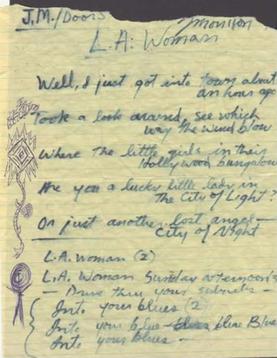
"L.A. Woman" is a song by the American rock band the Doors. The song is the title track of their 1971 album L.A. Woman, the final album to feature Jim Morrison before his death on July 3, 1971. LA Weekly named it No. 1 on their list of "the 20 best songs about the city of Los Angeles".

"Why Can't We Be Friends?" is a song by American funk band War, from their 1975 studio album of the same name. It has a simple structure, with the phrase "Why can't we be friends?" being sung four times after each two-line verse amounting to forty-four times in under four minutes. The song reached No. 6 on the Billboard Hot 100 in the summer of 1975, and uniquely features each band member singing their own verse. It was played in outer space when NASA beamed it to the linking of Soviet cosmonauts and U.S. astronauts for the Apollo–Soyuz Test Project. Billboard ranked it as the No. 23 song of that year.

"Love in an Elevator" is a song performed by American rock band Aerosmith, written by Steven Tyler and Joe Perry. It was released in August 1989 as the lead single from their third album with Geffen Records, Pump, released in September. It peaked at No. 5 on the Billboard Hot 100 and reached No. 1 on the Hot Mainstream Rock Tracks chart. The RIAA certified it gold.

The Black-Man's Burdon is a double album by American band Eric Burdon and War, released in December 1970 on MGM Records. It was the last album by the group before Burdon left and the remaining band continued as War.
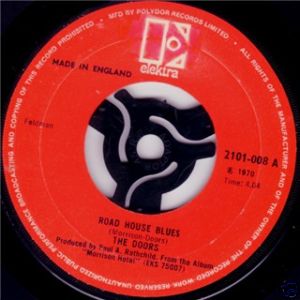
"Roadhouse Blues" is a song by the American rock band the Doors from their 1970 album Morrison Hotel. It was released as the B-side of "You Make Me Real", which peaked at No. 50 on the U.S. Billboard Hot 100 and No. 41 in Canada. "Roadhouse Blues" charted in its own right on the Cash Box Top 100, peaking at No. 76. The song became a concert staple for the group and it has been covered by numerous artists.
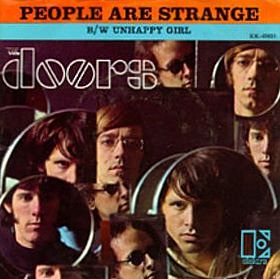
"People Are Strange" is a song by the American rock band the Doors. It appears on the band's second studio album, Strange Days, released in September 1967. The song was written by the Doors' vocalist Jim Morrison and guitarist Robby Krieger, although all of the band are credited on the sleeve notes.
"The Soft Parade" is a song composed by the American rock group the Doors, though credited to lead singer Jim Morrison only. It was recorded for their fourth studio album, also titled The Soft Parade (1969), appearing as the closing track. It has been considered as one of the most musically diverse compositions by the band.

"A Face in the Crowd" is a song co-written and recorded by Tom Petty. It was released in February 1990 as the fourth single from his first solo album Full Moon Fever. It peaked at number 46 on the U.S. Billboard Hot 100 chart.
















